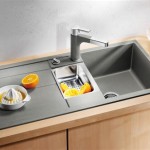What Is A Heat Sink
A heat sink is a passive heat exchanger that transfers heat from a heat source to a fluid medium, often air or a liquid. Heat sinks are used to cool electronic components or other systems that generate heat, such as computer processors or high-power lasers. By dissipating heat, heat sinks prevent the components from overheating and failing prematurely.
Heat sinks are typically made of metal, which has a high thermal conductivity. The metal fins or plates of the heat sink increase the surface area available for heat transfer, allowing more heat to be dissipated. The fins or plates are often blackened or anodized to increase their emissivity, which further enhances heat transfer by radiation.
The effectiveness of a heat sink is measured by its thermal resistance, which is the temperature difference between the heat source and the fluid medium per unit of heat flow. The lower the thermal resistance, the more effective the heat sink is at dissipating heat.
There are many different types of heat sinks, each with its own advantages and disadvantages. Some common types of heat sinks include:
Air-cooled heat sinks: Air-cooled heat sinks use natural convection or forced convection to dissipate heat. Natural convection occurs when warm air rises and is replaced by cooler air. Forced convection uses fans or blowers to circulate air over the heat sink, increasing the rate of heat transfer.
Liquid-cooled heat sinks: Liquid-cooled heat sinks use a liquid, such as water or glycol, to dissipate heat. The liquid is circulated through channels or tubes in the heat sink, absorbing heat from the heat source. The heated liquid is then cooled by a separate heat exchanger, such as a radiator.
Vapor-chamber heat sinks: Vapor-chamber heat sinks use a sealed chamber filled with a volatile liquid. As the liquid is heated, it vaporizes and rises to the top of the chamber. The vapor condenses on the cooler walls of the chamber, releasing its heat. The condensate then flows back to the bottom of the chamber, where it is reheated and vaporized again.
Factors to Consider When Choosing a Heat Sink
When choosing a heat sink, there are several factors to consider:
Heat source: The size and shape of the heat source will determine the size and shape of the heat sink required.
Heat load: The amount of heat that needs to be dissipated will determine the thermal resistance of the heat sink required.
Fluid medium: The fluid medium used (air, liquid, or vapor) will determine the type of heat sink required.
Cost: Heat sinks can range in price from a few dollars to several hundred dollars. The cost of the heat sink should be considered when making a decision.
By considering all of these factors, you can choose the right heat sink for your application.

What Is A Heat Sink Sunpower Uk

What Are Heat Sinks And How They Made

The Ultimate Guide To Heat Sinks Everything You Need Know Arrow Com

What Is A Heatsink How It Works Types Manufacturing Process

Heat Sinks And Process Cooling North Slope Chillers

Heat Sink Wikipedia

What Is A Heatsink Basic Definition Tom S Hardware

What Is Heat Sink And Its Importance

Choosing The Right Heat Sink For Your

What Is A Heat Sink Pcb Hero







